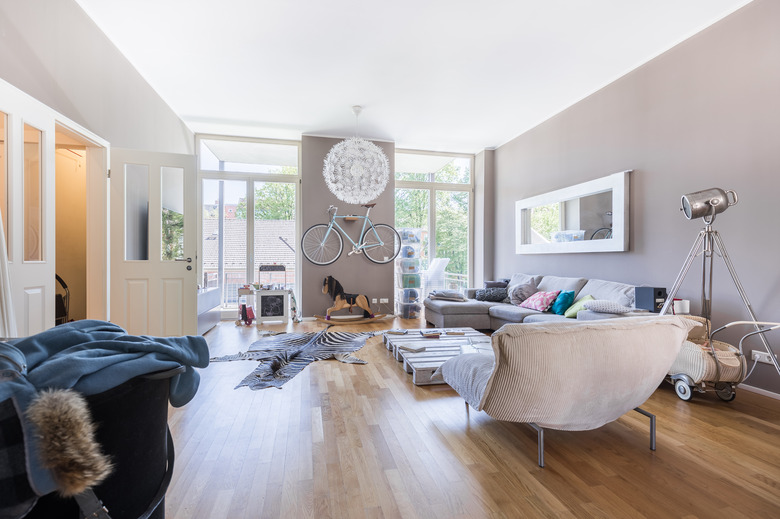How To Refinish Old Wood Floors Without Sanding
Sanding hardwood floors is a big, messy and expensive job, and there you have three good reasons to avoid doing it. Even if you have the budget for it and can take a vacation while the work proceeds, your floor may not be a good candidate for sanding. It may be over-sanded, or it may have a veneer that's too thin to sand. Luckily, you have options other than leaving the floor as it is or replacing it.
The best way to refinish wood floors without sanding is to use a technique called screen and recoat. This involves scuffing up the finish with a floor buffer and applying a refresher coat of finish. Some pros refer to this as sandless refinishing, but that can also refer to a different method that substitutes a chemical etcher for the buffer. The former is a proven floor restoration method, while the latter is the "Hail Mary" pass of floor care. It may work, and it may not.
To Sand or Use Sandless Refinishing
To Sand or Use Sandless Refinishing
If you have an old worn-out laminate floor, sandless refinishing is for you, particularly the chemical method. It's really the only option you have, other than replacing the floor. Sandless isn't always a good idea for solid wood floors, though. It won't get out deep scratches or stains and it won't help repair cupping or crowning. You can use this method to darken the color of the floor, but if you want to lighten the color, you have to sand.
If your floor has been over-sanded or has a thin veneer, you can usually tell by removing a heat register or a door threshold so you can see a cross-section of the wood. Another way to tell is to press on the edges of a floorboard with your finger. If you feel the wood give, or if, by observing the cross-section of a board, you can see that the surface is very thin, you shouldn't attempt to sand the floor.
The Screen-and-Recoat Method
The Screen-and-Recoat Method
This floor restoration method requires a floor buffer with a sanding screen to scuff the old finish of the floor, which is why it's called a screen and recoat. After mopping the floor and letting it dry, you use the buffer to run a 120-grit sanding screen over the surface. You shouldn't use any screen coarser than that because you don't want to wear through the finish; you just want to smooth out the surface scratches.
After screening, you vacuum the dust, tack the floor and lay two coats of clear floor finish. If you apply a waterborne finish, which dries in a couple of hours, you can complete the entire operation in a day. You'll raise some dust during this procedure, but it's negligible compared to the dust you raise by sanding the floor.
Using a Hardwood Floor Refinishing Kit
Using a Hardwood Floor Refinishing Kit
Everything you need for the chemical etch method comes in a hardwood floor refinishing kit. It includes a chemical etcher, a clear finish and the tools you need for applying them.
The etcher must be applied to a clean floor. You can use the tools that come in the kit to apply it, but a paint pad works just as well. Like an acid, this product de-glosses the existing finish, which is necessary for the new finish to adhere. After the etching compound dries, you apply the clear finish, also using a paint pad or the application tool in the kit.
